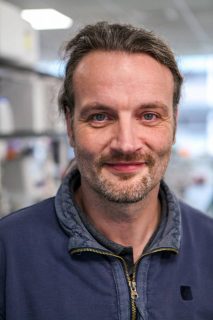Invited Talk by Prof. Dr. Kristian Franze – “The Mechanical Regulation of Neuronal Growth and Regeneration”, Dec 7th 2020, 14h @FranzeLab
It’s a great pleasure to announce an invited presentation by our new Max Planck Director and Alexander-von-Humboldt Professor Dr. Kristian Franze at our lab. He will give us some insights into his work on “The Mechanical Regulation of Neuronal Growth and Regeneration”.
Title: The Mechanical Regulation of Neuronal Growth and Regeneration
Date: Dec 7th 2020, 14h
Location: https://fau.zoom.us/j/96518423112?pwd=ZHkxcDZUZFQra05TWXZ3WkxJNVBMZz09
Short Bio: Dr. Kristian Franze, born in Germany, has been a reader at the University of Cambridge in the United Kingdom since 2017. After completing his studies in veterinary medicine at the University of Leipzig, where he received his doctorate in physics in 2007, he went to the University of Cambridge as a postdoc on a Feodor Lynen Research Fellowship from the Humboldt Foundation. He then worked at the University of Leipzig before continuing his academic career as a lecturer in Cambridge in 2011. He has received several international awards for his research, including an ERC Consolidator Grant in 2018.
Abstract: During development and pathological processes, cells in the central nervous system (CNS) are highly motile. Despite the fact that cell motion is driven by forces, our current understanding of the physical interactions between CNS cells and their environment is very limited. We here show how nanometer deformations of CNS tissue caused by piconewton forces exerted by cells contribute to regulating CNS development and pathologies. In vitro, growth and migration velocities, directionality, cellular forces as well as neuronal fasciculation and maturation all significantly depended on substrate stiffness. Moreover, when grown on substrates incorporating linear stiffness gradients, glial cells migrated towards stiffer, while axon bundles turned towards softer substrates. In vivo time-lapse atomic force microscopy revealed stiffness gradients in developing brain tissue, which axons followed as well towards soft. Interfering with brain stiffness and mechanosensitive ion channels in vivo both led to similar aberrant neuronal growth patterns with reduced fasciculation and pathfinding errors. Importantly, CNS tissue significantly softened after traumatic injuries. Ultimately, mechanical signals not only directly impacted neuronal growth but also indirectly by regulating neuronal responses to and the availability of chemical guidance cues, strongly suggesting that chemical and mechanical signaling pathways are intimately linked and that their interaction is crucial for neuronal development and regeneration.
